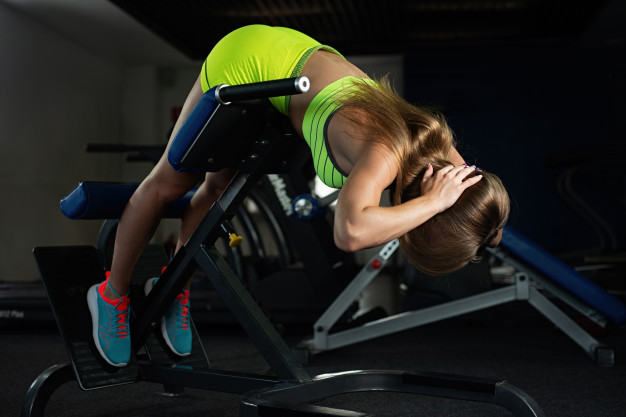Prevention/Treatments for Exercising with Hyperextension
Exercise serves as a crucial tool for staying healthy, and comfortable movement makes it much more likely that individuals will continue with an exercise plan. The human body moves in so many different ways, but joints can unfortunately bend in a direction that can cause pain and injury, sometimes severely. Learning how to prevent joint injuries (hyperextension) and how to treat them should they occur will help you ‘get back at it’ with your exercise routine.
Contents
What Functions do our Joints Perform?
Our joints help us do what we want to do every day – in play, sports, working out, and everyday activities like cleaning houses or playing with kids. Unfortunately, we typically forget about how important our joints are until we end up with an injury. It’s easy to take our bodies and our joints for granted! Maybe you were running and abruptly stopped and your knee straightened up too much, or while playing tennis, swung back too far and the elbow follows your momentum and bent backward a bit.
Or you’ve even seen acquaintances after an injury to a joint wearing some kind of brace or compression-wear, like an elbow brace for tennis elbow, wraps to protect the wrists during boxing, or a compression sleeve around the lower leg to support the ankle. Maybe you’re out kicking a soccer ball and your ankle turns in the wrong way.
Hyperextension: Meaning and Definition

If we move any joint in the wrong direction, we’ve suffered what’s called a hyperextension. It can happen more frequently as we age and our soft tissues become less flexible, or if the muscles aren’t strong enough yet to support the joints properly. Understanding what happens when we overextend a joint, but more importantly how to prevent and treat those kinds of injuries will, in the long run, increase your odds of staying active for years to come.
Defining hyperextension is important in understanding how the body functions so we can learn how to use good body mechanics to prevent injury. Every joint has a normal range of motion – the amount of flexion depends on the joint in question. A healthy elbow can bend approximately 150-degrees in a fully closed position and will be at 0-degrees when fully extended. (caveat – there are some individuals, particularly some women gymnastics, who can naturally extend their elbows and knees past 0-degrees without injury.
Those individuals are still at risk of hyperextension injuries – their injuries simply occur at a different point than average individuals). An average knee can typically go from 0 degrees when straightened to 125 to 135-degrees flexion. In either case, when the joint is overextended past the 0-degree and the soft tissues are stretched to a point of pain and injury.
Can Hyperextension lead to Serious Issues?
Just a small overextension of the joint can result in extreme pain and serious injury. And not just injury to the joint. Because this kind of injury is considered ‘compound’, other tissues are affected. Compound injuries simply mean more than one kind of tissue is affected. With a bone break, a compound break typically means the skin has suffered trauma (ie the bone tore the tissue). With hyperextension, bones, tendons, muscles, blood vessels, skin, and ligaments are affected.
When the tissues overstretch, blood vessels and capillaries can tear, tendons and ligaments are stretched past their normal elasticity (often never returning fully to 100% pre-injury state, which is why recurring injuries are common). A mild injury may simply cause discomfort – severe trauma to a joint may require surgery to recover function.
In the fitness world, trainers see a myriad of joint hyperextension injuries, particularly by individuals who lose focus on form and technique, or neglect to wear preventative gear such as a tennis elbow band or a support ankle brace. Basketball players are prone to knee hyperextension by nature of how the game is played – an abrupt stop with the foot in front of the body can result in the momentum of the body also moving forward while the leg is outstretched. Shoulders have an extremely wide range of motion in all 360-degrees which means for a variety of possible movements, but also makes hyperextension more likely, and in any direction. Overextension of elbows by placing too much weight on the arms, for example by yoga practitioners who attempt a handstand without proper training and practice.
How to Prevent Hyperextension Injuries from happening?
We know joints are essential for every movement we make, so it makes sense to learn how to prevent joint injuries like hyperextension so we can stay active and moving. Or if the injury is already on you (sorry – big-time bummer!) knowing some good treatment can speed up your recovery.
First and foremost, know how to properly engage in the activity you’re performing. This statement truly is as simple as it gets – without proper technique you are risking an injury (to your whole body, not just your joints). And that means focusing on the form even when you experience tiredness. It’s easy to ‘get lazy’ and neglect to pay attention as you tire during exercise but resist the urge.
If you fatigue, slow down, reduce the weight or end the activity. Avoid attempting to ‘bulk up’ or ‘speed up’ too fast – increase the duration and weight amount slowly to ensure your muscles are building appropriately. Good body mechanics during exercise and everyday activities is essential to keeping your body moving smoothly.
If you’re starting a new activity or exercise program that you’re not familiar with, especially if you’re doing online workouts at home instead of going to the gym, enlist the help of a personal trainer (even a virtual one).
The small expense of a trainer will help you learn proper body movements during weight lifting, how to properly perform punches during shadow boxing, and give you confidence that you’re doing explosive movements like burpees and jump squats in a way that will keep your joints bending in the right direction.
What More To Do
Wearing protective gear during activities like kickboxing, tennis, and gymnastics can be helpful. There are some professionals recommending against braces and compression-wear so as not to become ‘dependent on them.’ Or arguing it inhibits strengthening of the joint, so ask a medical professional if you need guidance. However, with activities where movements are highly repetitive (which is the case in kickboxing and tennis!) The use of proper tennis elbow brace placement or boxing wraps can mean the difference between pain and a winning match.
Or if you’re reading this with a hyperextension in your joint, this article is for you! If you haven’t, consider a knee brace or tennis elbow band – compression devices. These help by immobilizing the joint AND making you more conscious of movements in the injured joint. The compression can also help with pain reduction.
What is the RICE Acronym for helping with Hyperextension?
And then we’ve all heard of the RICE acronym. It may be an advice that is old but its still true that it helps heal hyperextension as well as other injuries.
- REST the joint that you injured. And if you can’t rest, wear a brace – that will help remind you not to bend it.
- Apply ICE to the injury. Ice can reduce inflammation.
- Wear something COMPRESSIVE like a brace. In the case of a tennis elbow injury, consider if a tennis elbow brace versus a compressive elbow sleeve is right.
- And finally, ELEVATE immediately after injury to help with inflammation and pain reduction.
The Final Word
When it comes to your joints, you deserve to feel healthy and move smoothly. When it comes to learning how to care for your joints, particularly if you’ve hyperextended. Researching what makes a brace the best tennis elbow brace or the best knee brace can be confusing. Pay attention to what your medical professional recommends, and research quality companies like CopperJoint.comto help you heal faster. Watch your technique every time and keep those bodies moving!
Read Also:
- Medical Conditions Associated With Grieving Seniors
- Top 10 Best Back Massagers Reviewed in 2020
- Top 10 Best Folding Exercise Bike in 2020
- Top 10 Best Shoulder Press Machine To Pump Up Your Shoulder



